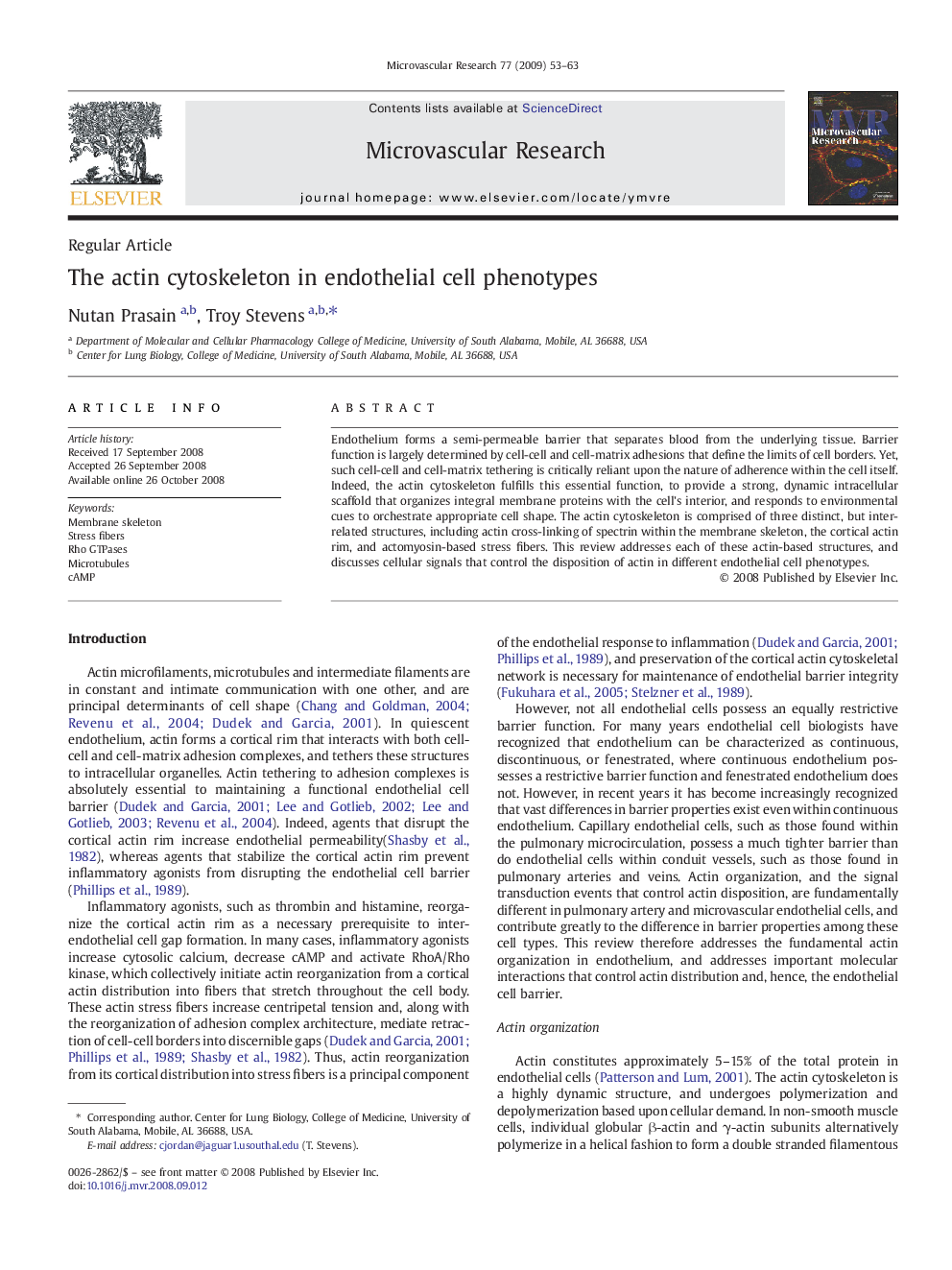| Article ID | Journal | Published Year | Pages | File Type |
|---|---|---|---|---|
| 1995372 | Microvascular Research | 2009 | 11 Pages |
Endothelium forms a semi-permeable barrier that separates blood from the underlying tissue. Barrier function is largely determined by cell-cell and cell-matrix adhesions that define the limits of cell borders. Yet, such cell-cell and cell-matrix tethering is critically reliant upon the nature of adherence within the cell itself. Indeed, the actin cytoskeleton fulfills this essential function, to provide a strong, dynamic intracellular scaffold that organizes integral membrane proteins with the cell's interior, and responds to environmental cues to orchestrate appropriate cell shape. The actin cytoskeleton is comprised of three distinct, but inter-related structures, including actin cross-linking of spectrin within the membrane skeleton, the cortical actin rim, and actomyosin-based stress fibers. This review addresses each of these actin-based structures, and discusses cellular signals that control the disposition of actin in different endothelial cell phenotypes.
